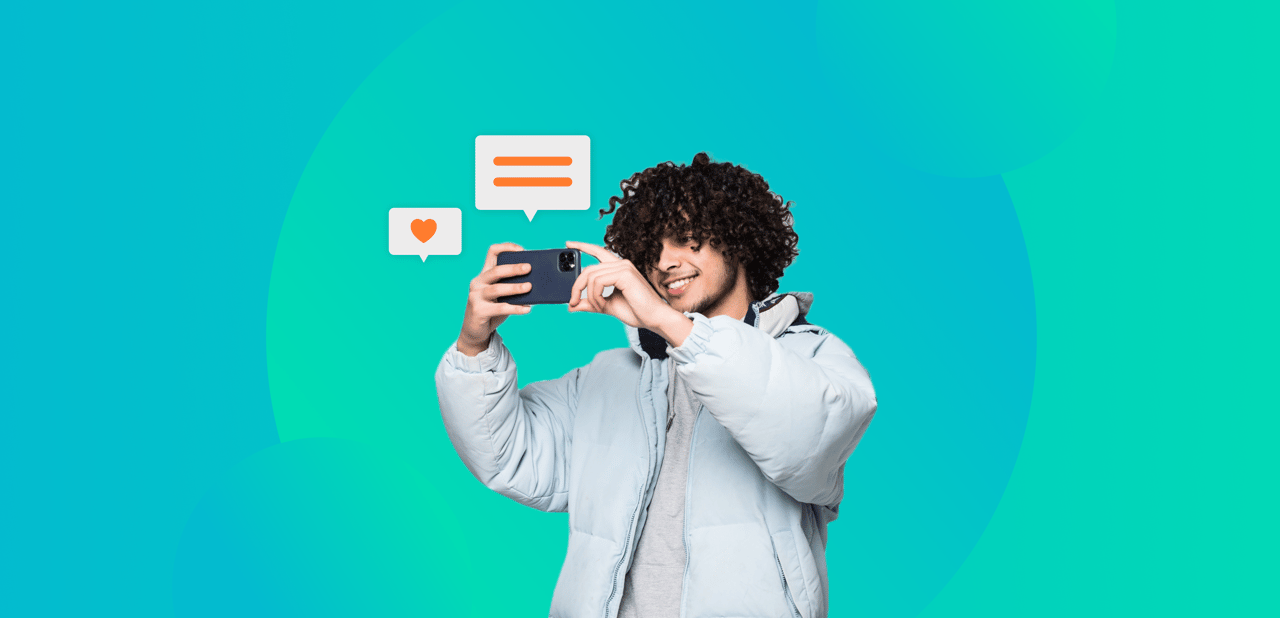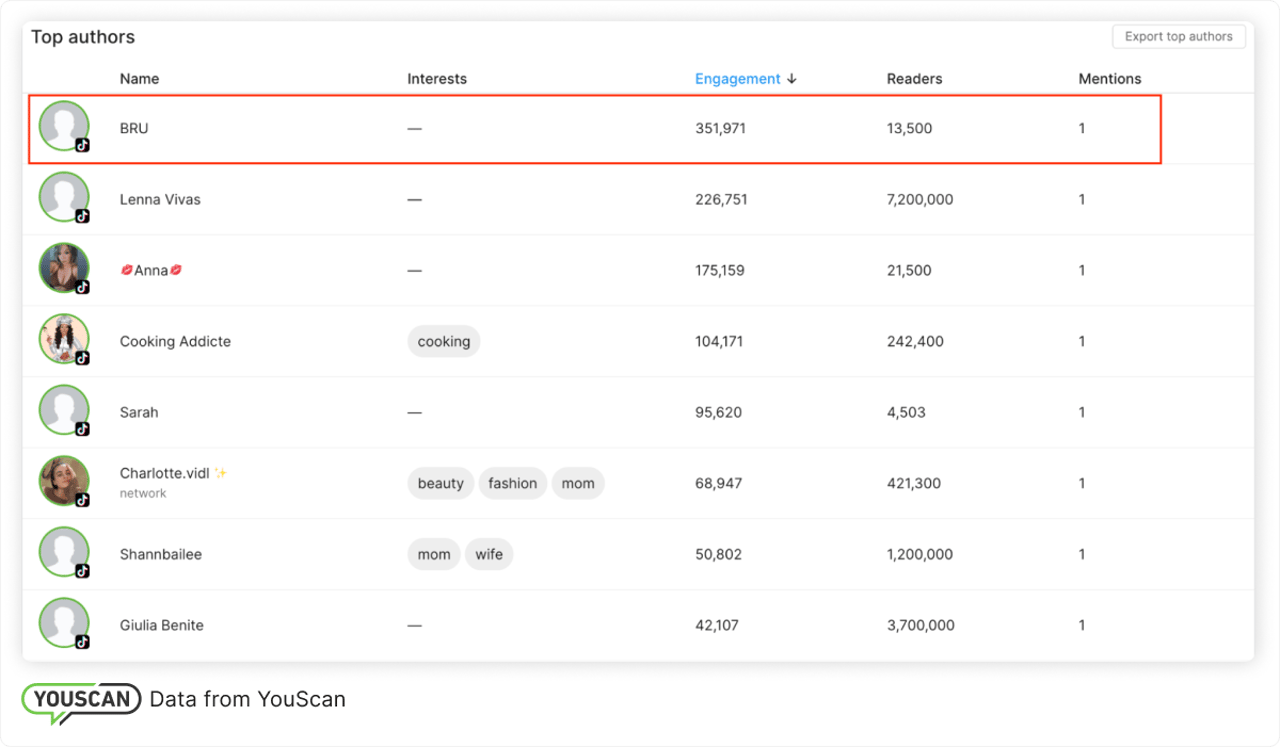User-generated content: how to benefit from it?

While marketers put tremendous effort into promoting their brands by creating various types of content, their existing and potential customers often don’t find it interesting. The reason is that companies choose for their campaigns celebs or impeccable models and circumstances that are far from real life. However, this problem already has a solution. User-generated content can help engage customers and effectively promote your products and services.
UGC content meaning
UGC in marketing means content created by anyone except the official brand representatives. It can be a social media post, video, review, blog post, or any other type of content that was produced without the involvement of your employees.
With the growth of popularity and development of social media, user-generated content and other types of organic content have become increasingly popular. Therefore, it affects brands more and more based on which type of reviews is prevalent – positive or negative.
Why is user-generated content so important?
Consumer-generated content can be implemented in all stages of the buyer’s journey. It can have several important functions like brand promotion, increasing sales, growing user engagement, etc. At the same time, there are other less obvious ways for brands to benefit from UGC in social media.
1. Brand loyalty.
Since user-generated content is created by people casually, it gets more trust than other content created by the brand. In the case when a brand manages to propose high-quality products or services, the impression of UGC video or any other type of content will be positive. And the more users see it, the more chances a brand is able to get new loyal customers.
2. Unbiased opinions and authentic content.
When a brand creates a promo or collaborates with influencers, all details of the work will be follow the concept of the brand and its requirements. However, social media users aren’t limited with the brand or product concept and can show how they see it in real life. In addition, users can mention useful details that can’t be part of adverts. For instance, if a beauty brand released a new face cream for dry skin types, it definitely wouldn't mention any negative side effects when for instance, it is used on oily skin. At the same time, social media users can share their unbiased opinions with both positive and negative sides, and it will definitely give more trust to the audience.
3. UGC in digital marketing to help save on budget.
Compared to TV commercials or even worldwide paid social adverts, a user-generated content strategy is cheap and doesn't require much effort. As one of the most straightforward examples, you can set up a challenge on social media and ask users to share their content with a specific hashtag. After getting user permission, you can repost the best examples on your page or use them for future adverts.
User-generated content examples
Implementing user-generated content in marketing strategy nowadays isn't innovative, and it has already shown its effectiveness. Many brands already use it and get impressive results. For instance, you can find the account Zara Street Style on Instagram, one of the most successful brands using UGC. It has 262K subscribers and promotes several hashtags, including the brand hashtag #zarastreetsyle. It collects and publishes different stylish looks that include Zara clothes.


Although bloggers create pictures with hundreds of thousands of followers, images of users with a smaller audience can also be posted.




With this account, the brand achieves several goals:
shows different options to combine their clothes
sells certain products since their vendor codes are mentioned in the description
creates a group of loyal social media users who know that every time they post something with Zara clothes, it can be reposted on a page with a big number of followers
saves on budget: creating street style photoshoots would be way more expensive
Another example is GoPro. The brand was one of the pioneers working with user-generated content. This is easy to explain: it's too difficult and too expensive to create so many videos in extreme conditions to maintain social media accounts and promote the brand. That's why GoPro's content strategy includes user-generated content on Instagram and YouTube.


How to find user-generated content?
There are several ways to collect this type of content. You can simply check brand tags or brand hashtags on your social media. But this won’t help you to collect all mentions. Therefore, you won’t have access to lots of high-quality content if users don’t mention your brand.
Instead, a much more productive way to work with UGC is through social listening. You can collect all your brand mentions with a platform like YouScan and analyze this data. It is especially useful when it comes to visual content. You can reveal trends in visual content gaining popularity and see what scenes, activities, persons, logos and objects are the most popular in pictures.


1. Find authors who generate the best engagement.
When all mentions are collected, you can choose a certain period, exclude promotions, choose positive sentiment, and see the list of users who created the most engaging content about your brand.
In the picture below, you can see the top bloggers who mentioned the cosmetics brand Sephora sorted by the number of likes, reposts and comments.


The biggest engagement came from a blogger with only 13,500 subscribers.
2. Analyze the top-performing social media networks.
Not every brand has resources to maintain several accounts with user generated content on different platforms. That’s why, especially at the very beginning, you can focus on only one source. Your social listening tool will help you to understand where your core audience spends time.
In the case of Sephora, the brand should choose between YouTube and TikTok.
3. Monitor hashtags.
You can use tools provided by social media networks to track user generated content from different campaigns. However, they don't allow applying filters like separating organic content from adverts or filtering mentions by sentiment, locations and more. However, this information you can get with social media tools. To learn more, read our article about trending hashtags.
4. Analyze trends.
You can check the most trending words that are mentioned most frequently with your brand or check different scenes, activities, persons, objects or logos often present in pictures featuring your brand. You can use this data as a source of ideas for future campaigns. In the case of Sephora, Dior and Glossier might be good options for future collaborations.


Benefits of consumer-generated content
With the implementation of user-generated content in marketing, brands can achieve several important goals:
increase reach and engagement
grow user loyalty
get lots of free content
increase sales.
If you want to find different types of user-generated content about your brand, just try YouScan’s free demo.



.png)